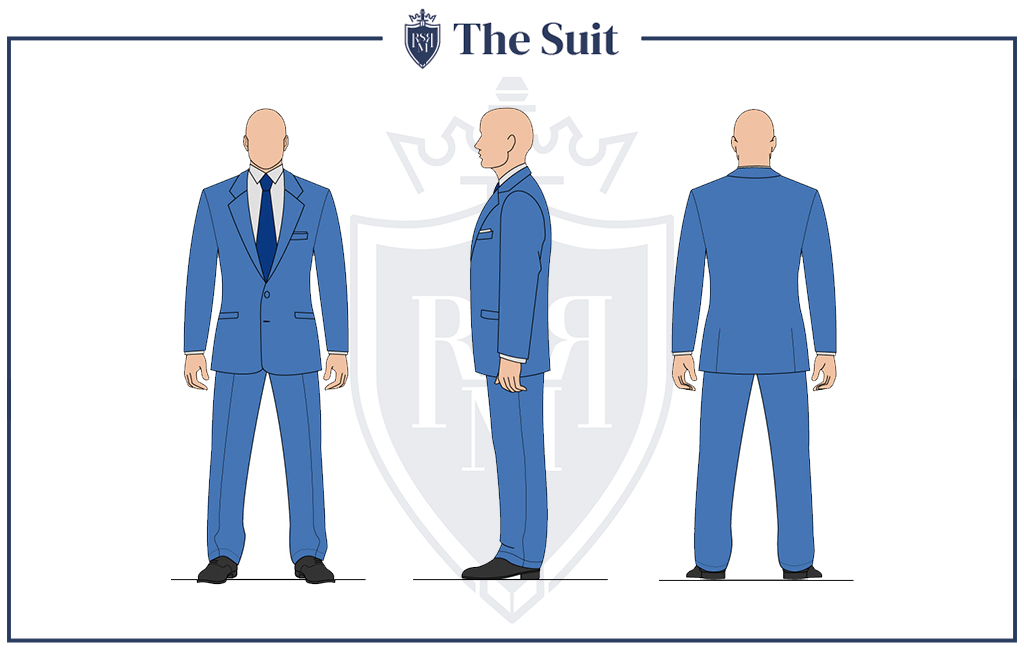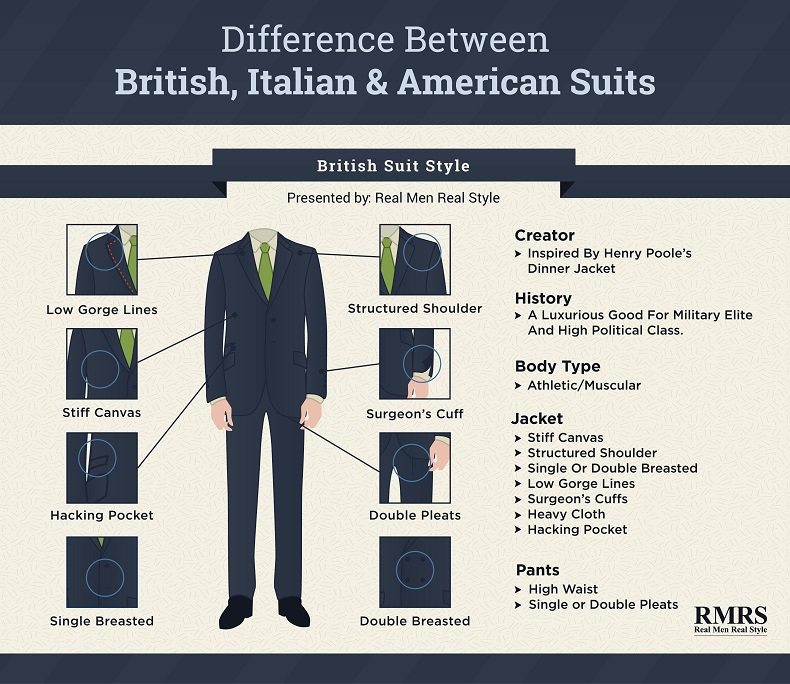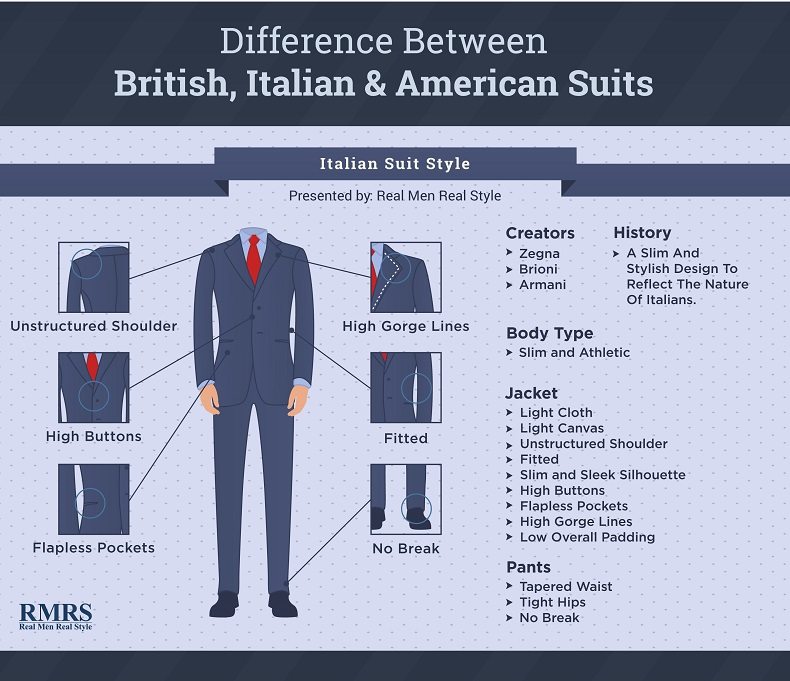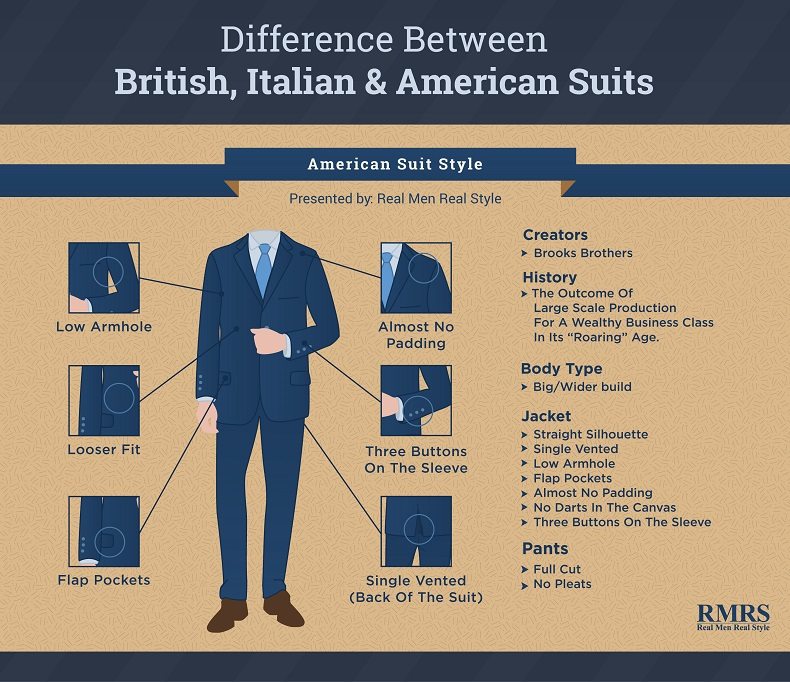British, Italians, & Americans.
We all do things a little differently.
The idea in question for this article?
Suits.
How about we go on a little journey through time?
A journey that will teach us a great deal about men’s fashion, as we know it today.
We will be exploring three different times in the history of men’s apparel.
Three important turns of events that saw the rise of three iconic garments:
The British, Italian and American suit.
You might be already aware of the existence of these three styles, maybe know some of the obvious differences. But by the end of this journey, you will not only know a great deal of important details about them (that will help you make more conscious choices when purchasing a new suit) but you will understand what made them the way they are.
Who the creative and visionary minds behind each and every one of them were. And most of all, how close men’s fashion is related to history, society and above all, the people and their particular nature.

So buckle up. Wear your most vintage outfit. And back we go to mid 19-th century Mayfair District, London, in a street called Savile Row.
This is a guest post by Mario Natella. Mario is a student who is currently studying Aerospace Engineering. Mario’s father, Domenico, was an Italian Tailor for many years.
The wisdom he passed down to his son is being depicted through Mario’s writing in this article, and several more to come. I hope his passion and enthusiasm for style will speak volumes to you like it did to me.
Suit Styles 1: The British or English Suit
We are now strolling in the street believed to have given birth to the traditional British suit. A street that signifies the British influence in traditional bespoke men’s tailoring.
Built in the 1700s, and named after Lady Dorothy Savile, the street was meant for the high political class and military elite of those times.
As you can easily imagine, the witty British merchants of luxurious goods saw this very street as a golden opportunity. And in no time, literally everything those wealthy officers and politicians might have needed could be found just around the corner of their majestic dwelling in Savile Row.
Obviously, amongst the luxurious goods of the mid 19th century, we find the finest men’s garments provided by the greatest bespoke tailors.
One of them changed the course of men’s fashion irremediably.
He was at number 37, Savile Row. The atelier of Henry Poole, father of the otherwise known as British style.
In the second half of the 1800s, Sir Poole, under the commission of the Prince of Wales, created a tailless smoking jacket made out of the same fabric of a tailcoat. The garment is also referred to as the dinner jacket. The vision of the Prince of Wales, together with the creative mind of a skilled tailor, slowly changed what was considered formal wear amongst an extremely traditional high class.
The dinner jacket, and, of course, the whole new suit style they created, had a set of unique characteristics that persisted through time, were passed from generation to generation arriving in our wardrobes under the label “British style”. This is one the greatest examples of timeless style.
But allow me now go into some details of a traditional British suit. I’ll be sharing with you some of the fundamental details that will allow you to recognize a British cut immediately.
Click Here For A Full Infographic Comparison Of British Vs Italian Vs American Suits
The Jacket
We’re looking at a very structured and highly tailored garment. The structure is emphasized by defined shoulders, which also feature thick shoulder pads. The canvas is stiff, thus giving the jacket a very controlled look as opposed to a lighter canvas that would follow the natural curves of the body.
The fit is tailored to be close to the body, with close-fitting sleeves ending with the so-called surgeon’s cuffs and a high armhole. The front of the jacket is adorned with a low type of gorge lines and ticket pockets.
The garment comes in heavy cloth, which makes the jacket very functional in the terrific Royal weather. You can also see it single, or double-breasted, with usually two vents.
You need to remember that the jacket was meant for a military elite and noble British class of the mid 19th century. And a structured jacket was the standard of formality at the time.
An element that signified the social status of the person (or family) wearing it and that was closely related to the even older and more traditional uniform. Despite all the innovative elements of the jacket (e.g. no tail, single-breasted etc.), Sir Poole kept one traditional element to its design and created a balanced combination of old (and established) and new (and revolutionary).
The Pants
Obviously, abundance was an element that the wealthy class of Savile Row did not fear at all. And if we had to describe the pant of British suit with one word, that word would be indeed abundance.
We’re looking at a garment cut out of a generous amount of fabric. Two elements are really iconic of the suit: high waist and up to 3 pleats, which – if you are not familiar – is a fold created by doubling fabric on itself and securing it in place.
Suit Styles 2: The Italian Suit
The next journey will bring us in an emerging (although still healing after the second world war) 1945 Rome, in the old fashioned Via Barberini. Yet another influential street.
Yet other creative artists who revolutionized Italian fashion and not only. Just like the rise of the British style, the Italian was also a slow and steady road to worldwide success and appreciation.
It was only in 1952 that that idea grew immensely after the first fashion show (properly said) held at Palazzo Pitti in Florence.
Many names are believed to have had a significant role in the design of the Italian suit, as we know it today. Some remarkable mentions are Ermenegildo Zegna, Nazareno Fonticoli (founder of Brioni) and Armani.
Regardless of the particular tailor or designer, there’s one common element that created the Italian suit: Italians. Here we see how the nature of the people itself leads designers to a completely new concept of formal wear.
Italians were not comfortable in the stiff and structured British cut. A garment that is way too rooted in traditions to leave very little room to accommodate more stylish trends. A suit that is too heavy to be worn comfortably in warmer weather.
The Italian suit evolved in many styles over the years. Nowadays, we identify three major styles in Italy, namely Romano, Napoletano and Milanese. But going into the details of these three would be too big of a diversion and the topic is so detailed that would be itself another article!
For now, imagine yourself in the glorious Palazzo Pitti seeing the Italian suit for the first time back in 1952. Those elements, those details, those lines are still the ones you would see now in a modern Italian suit.
Click Here For A Full Infographic Comparison Of British Vs Italian Vs American Suits
La Giacca – The Jacket
The jacket (giacca in Italian– allow me a little Italian lesson here and there) is made keeping one and one thing only in mind: lightness.
The garment, in fact, looks light, feels light, and wears light. It is short and fits tight and close to the body. The canvas is also very light. The jacket is considerably less structured compared to the British one, and as a result of that, the cloth follows one’s natural curves. The shoulders are lightly padded, and the overall padding is significantly reduced.
The front of the jacket shows a pronounced V-shape, tight at the waist. Fun fact: the V-shape is actually deemed very attractive in a man, a detail that could be the hidden secret to our great (almost effortless) success with women!
The jacket comes single-breasted, and also features high gorge lines, flapless pockets and high buttons (usually two or three – although more exotic variations can be also found).
I Pantaloni – The Pants
To accompany the light and stylish jacket, the heavy British pants in abundant fabric had to be completely redesigned! The sleek silhouette set by the jacket is a constant also in the pants, thus giving a smooth look from head to toes.
We’re looking at pants with a tapered waist, which fit really tight to the hips. It ends with one break, in the most traditional design. Nowadays, a no-break type of pants is also common in the Italian style.
Suit Styles 3: The American “Sack” Suit
The story behind the American suit is living proof of how society and the economic situation within a particular country shape fashion.
We’ll be looking back at New York City in the 1920s. The “roaring twenties”. A time of prosperity that had a massive influence on many aspects of our lives now. The first difference can be immediately spotted here: the target group.
We saw in the history of the British suit that the suit was something of a luxurious good meant for the military elite and high political class. Bespoke tailoring was still the only accepted option since the demand was somewhat contained.
In the 1920s, the target group encompassed a wide target group made of the dominant and wealthy business class. Companies, like Brooks Brothers for example – who are considered among the pioneers of the American suit, had to start reinventing the suit in order to make it suitable for mass production. And we see these elements loud and clear just by having a quick attentive look at the American suit.
Click Here For A Full Infographic Comparison Of British Vs Italian Vs American Suits
The American Suit: The Jacket
The American jacket also goes by the name of “the sack”. Now, common practice associates the name to the look of the jacket itself. Which may or may not be the case, depending on whether you had to jacket custom-fitted or just picked it off the rack.
“The sack” actually comes from the French “sacque”, which is a particular construction technique for coats and jackets. The jacket, in fact, is made out of only two straight fabric panels. A technique that would be perfect for the large-scale production of clothes.
The jacket also comes with almost no padding and a straight silhouette. It is usually single-breasted, with two or three buttons. The canvas features no darts, which – in case you’re not familiar – are folds in the canvas layer that give it a more voluminous look.
It also has a single vent in the back, low armholes and flap pockets. The sleeves wear with a loose fit and feature three buttons only.
The American Suit: The Pants
As for the jacket, the way pants look is also heavily influenced by the rapid industrial construction technique. The pants are a full cut, with no pleats which would save a significant amount of fabric in the large-scale production.
Suit Styles 4: The End of the Journey
Welcome back to modern times!
Hopefully, by now you have learned what made the history of men’s wear across the world. When choosing the right suit for you, always keep in mind those differences and pick what suits you best.
On average, Italian suits work best with a slim and athletic person. American suits are for a more tough built, and can look great with very little extra work if you want to have it custom-fitted. British suits are still the most formal wear, and can be highly tailored to any body type.
And if you feel none of those styles fits you, your idea of style and your personality, then combine them, revolutionize them, turn them inside out, just like those inspiring artist did before you. And maybe sometime in the future, there will be someone like me writing about your style.
Click Here For A Full Infographic Comparison Of British Vs Italian Vs American Suits
This is a guest post by Mario Natella. Mario is a student who is currently studying Aerospace Engineering. Mario’s father, Domenico, was an Italian Tailor for many years.

The wisdom he passed down to his son is being depicted through Mario’s writing in this article, and several more to come. I hope his passion and enthusiasm for style will speak volumes to you like it did to me.
Click below to watch the video – Which Suit Wins? English Vs Italian Vs American Suit
The post Difference Between British, Italian & American Suits | Different Suit Styles & Cuts For Men appeared first on Real Men Real Style.



0 Commentaires